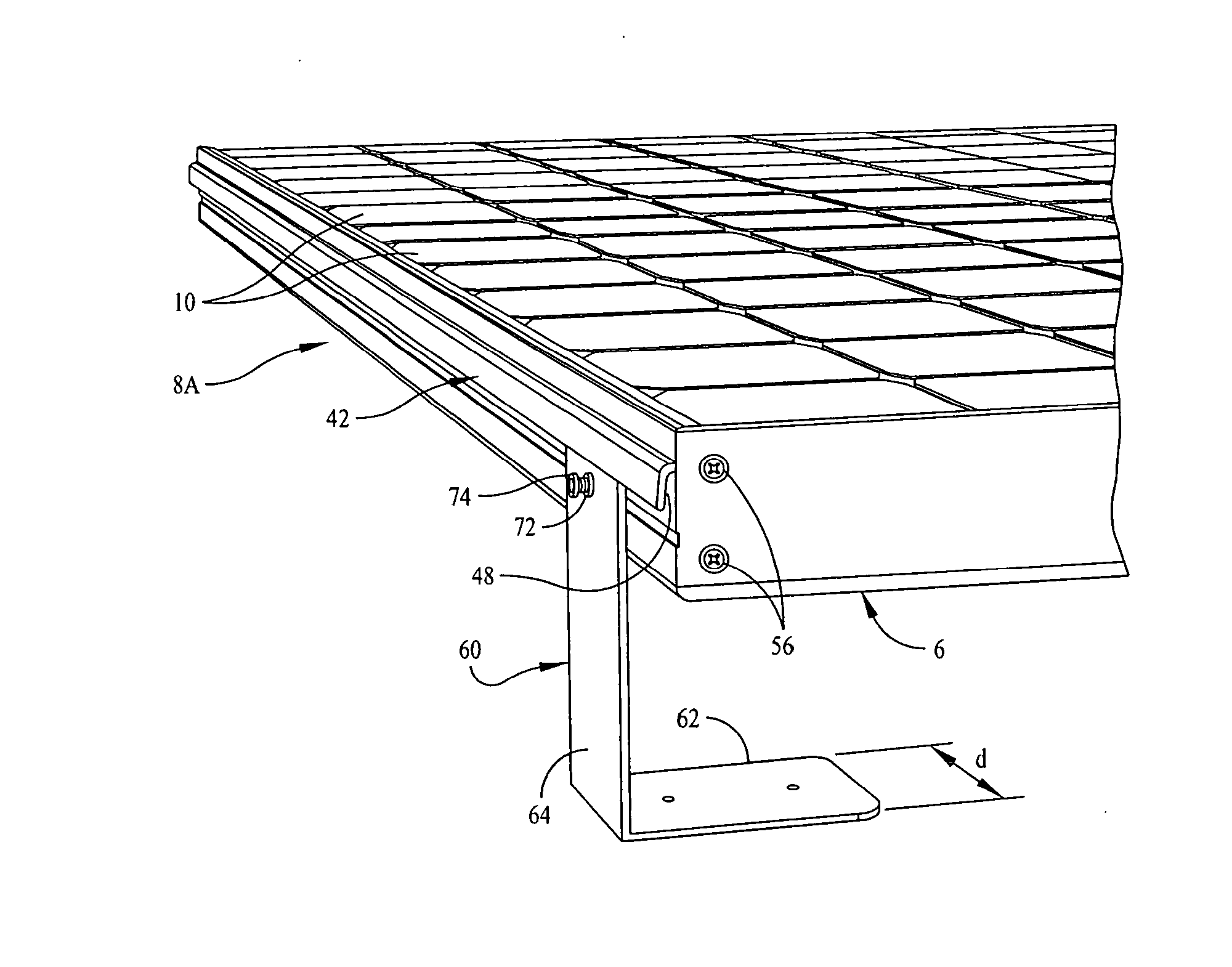Multi-function frame and integrated mounting system for photovoltaic power generating laminates
a photovoltaic power generating and laminate technology, applied in the direction of heat collector mounting/support, solar heat collector safety, light and heating apparatus, etc., can solve the problems of system inefficiency, module-to-module mismatch, and limitations of current photovoltaic power generating building-mounted systems
- Summary
- Abstract
- Description
- Claims
- Application Information
AI Technical Summary
Benefits of technology
Problems solved by technology
Method used
Image
Examples
Embodiment Construction
[0045]As used herein, the term “PV” is an acronym for “photovoltaic” and the term “photovoltaic power generating system” means a system comprising one or more PV modules. As used herein, the term “PV module” denotes an assembly of one or more PV laminations and a frame surrounding and supporting the laminate(s). Also a used herein the term “PV laminate” denotes and identifies an integral unit comprising a front transparent panel and a rear supporting panel, a plurality of electrically interconnected photovoltaic cells encapsulated between the front and rear panels, and electrical output means whereby the power generated by the cells can be transmitted for processing and / or use.
[0046]Referring now to FIGS. 1-4 and 6-8, there is shown a module that comprises one or more rectangular PV laminates 4 surrounded by a frame that comprises two opposite metal frame members 6 (FIGS. 1, 3, 4) and two opposite metal frame members 8A (FIGS. 2-4 and 6) and 8B (FIG. 7) that extend at a right angle ...
PUM
 Login to View More
Login to View More Abstract
Description
Claims
Application Information
 Login to View More
Login to View More - R&D
- Intellectual Property
- Life Sciences
- Materials
- Tech Scout
- Unparalleled Data Quality
- Higher Quality Content
- 60% Fewer Hallucinations
Browse by: Latest US Patents, China's latest patents, Technical Efficacy Thesaurus, Application Domain, Technology Topic, Popular Technical Reports.
© 2025 PatSnap. All rights reserved.Legal|Privacy policy|Modern Slavery Act Transparency Statement|Sitemap|About US| Contact US: help@patsnap.com



